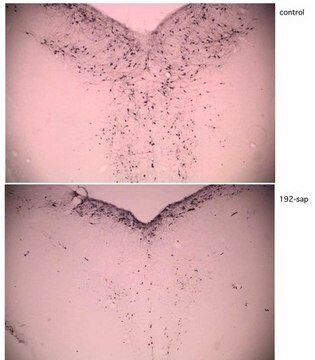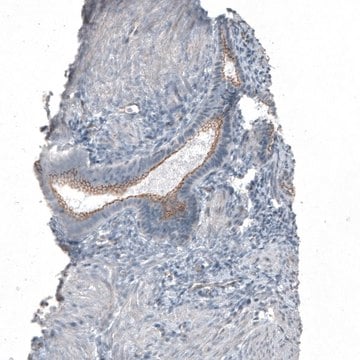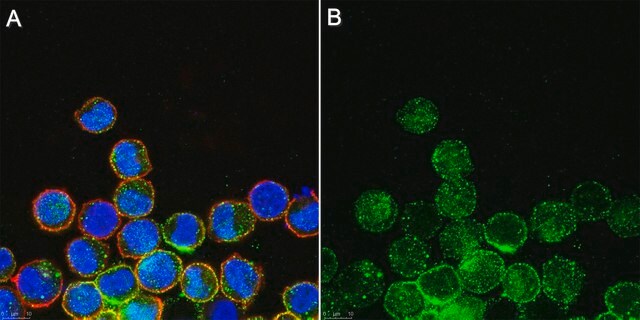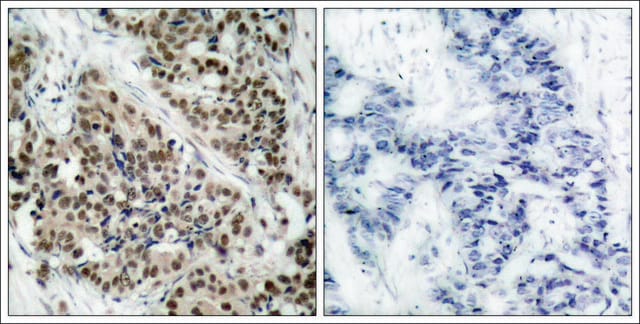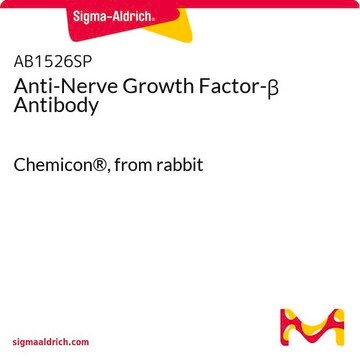MAB390
Anti-p75 LNGFR Antibody, Saporin conjugated, clone 192
clone 192, Chemicon®, from mouse
Synonyme(s) :
CD271 antigen, Low affinity neurotrophin receptor p75NTR, Low-affinity nerve growth factor receptor, NGF receptor, low affinity nerve growth factor receptor, nerve growth factor receptor, nerve growth factor receptor (TNFR superfamily, member 16), p75 IC
About This Item
Produits recommandés
Source biologique
mouse
Niveau de qualité
Conjugué
saporin
Forme d'anticorps
purified immunoglobulin
Type de produit anticorps
primary antibodies
Clone
192, monoclonal
Espèces réactives
rat
Ne doit pas réagir avec
human, mouse
Conditionnement
antibody small pack of 25 μg
Fabricant/nom de marque
Chemicon®
Technique(s)
immunocytochemistry: suitable
immunohistochemistry: suitable (paraffin)
Isotype
IgG1
Numéro d'accès NCBI
Numéro d'accès UniProt
Conditions d'expédition
wet ice
Modification post-traductionnelle de la cible
unmodified
Informations sur le gène
human ... NGFR(4804)
Description générale
Spécificité
Immunogène
Application
A previous lot of this antibody was used in IH(P).
Immunocytochemistry:
A previous lot of this antibody was used in IC.
Optimal working dilutions must be determined by end user.
Neuroscience
Neurodegenerative Diseases
Neurochemistry & Neurotrophins
Forme physique
Stockage et stabilité
Remarque sur l'analyse
Brain tissue
Autres remarques
Informations légales
Clause de non-responsabilité
Vous ne trouvez pas le bon produit ?
Essayez notre Outil de sélection de produits.
Code de la classe de stockage
12 - Non Combustible Liquids
Classe de danger pour l'eau (WGK)
WGK 2
Point d'éclair (°F)
Not applicable
Point d'éclair (°C)
Not applicable
Certificats d'analyse (COA)
Recherchez un Certificats d'analyse (COA) en saisissant le numéro de lot du produit. Les numéros de lot figurent sur l'étiquette du produit après les mots "Lot" ou "Batch".
Déjà en possession de ce produit ?
Retrouvez la documentation relative aux produits que vous avez récemment achetés dans la Bibliothèque de documents.
Notre équipe de scientifiques dispose d'une expérience dans tous les secteurs de la recherche, notamment en sciences de la vie, science des matériaux, synthèse chimique, chromatographie, analyse et dans de nombreux autres domaines..
Contacter notre Service technique

